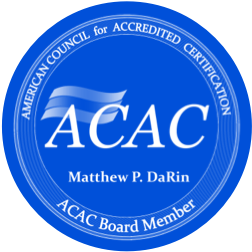Bluepoint Environmental provides comprehensive indoor air quality testing, and environmental quality assessments
A Healthy Indoor Air Environment
A healthy indoor environment is one which promotes the comfort, health, and well-being of the building users. Temperature and humidity are controlled within a comfort zone. Normal concentrations of respiratory gases, such as carbon dioxide, are maintained. The air is free of significant levels of contaminants and odors. Also contributing to a sense of well-being are comfortable levels of lighting and sound, appropriate ergonomic conditions, and job satisfaction. These factors are not air quality issues in the strict sense but, nevertheless, affect occupants’ perceptions of IAQ and, therefore, are important in a healthy indoor environment.1
Ever since the “Clean Air Act” was passed by the U.S. Congress in 1970, billions of dollars have been spent to control dangerous emissions outdoors. Yet, indoor air contaminants (especially in our office buildings) may pose the greatest threat to human health. Concentrations of harmful contaminants are much higher indoors than outdoors. As a rule of thumb, higher indoor air contaminant concentrations can mean higher health risks. According to a growing body of scientific evidence, serious acute and chronic health risks may very well result from inadequate indoor air quality (IAQ).1
Proper testing, analysis, and remediation of various pollutants in the home, and/or office building can result in improved health, productivity, and well-being.
Common Indoor Air Pollutants
In general, emissions from indoor contamination sources in a building are often the primary determinant of IAQ. They include:
- Building materials (deteriorated asbestos-containing insulation, wet/damp carpet, pressed wood products, cabinetry)
- Consumer products
- Cleaners, household products
- Furnishings, carpets, couches, chairs
- Central heating, cooling, and humidifaction devices (HVAC)
- Combustion appliances and processes (oil, gas, kerosene, wood, coal, and tobacco products)
- Biological growth
- Building occupants
- Outdoor sources (radon, pesticides, outdoor air pollution)
For a full, specific list see environmental contaminants View the EPA’s Pollutant Sources introduction. View the EPA’s Reference Guide to Major Indoor Air Pollutants in the Home
Our Services
Bluepoint can provide personal monitoring of employees to assess exposure of specific air quality constituents for regulatory compliance purposes. We can also perform Personal Exposure Limit (PEL), Time Weighted Average (TWA), and Short Term Exposure Limit (STEL) monitoring and assessments and develop Environmental Health & Safety and Chemical Hygiene plans.
Bluepoint can test residences/facilities to quantify and enumerate chemical constituents with the air, identify source contaminants, and develop engineering specifications to mitigate contaminants and maintain regulatory compliance.
BPE can develop Operation and Maintenance Plans focused on one or more of the following parameters:
- Total Volatile Organic Compound (T -VOC) Analysis, thermal desportion tube sampling
- EPA TO-14 & TO-15 VOC Analysis, MiniCan sampling
- Formaldehyde
- Airborne Particulate
- Bioaerosols (mold)
- Carbon monoxide (CO), carbon dioxide (CO2), hydrogen sulfide (H2S), Oxygen (O2)
- Radon
- Lead and other metals
- Ethylene Oxide
Simple Solutions to Reduce Indoor Air Pollution
- Source Control
We cannot stress the importance of reducing, and/or removing the source of the indoor air pollution. This may be a contaminated carpet, wall, or even ventilation (HVAC) system. - Ensure proper ventilation
Once the sources to pollution have been removed, the air must be cleaned and circulated with natural outdoor air. Increase the amount of outdoor, natural air coming indoors. Open windows, doors, turn on fans in windows, attics, crawl spaces, turn on kitchen and bathroom exhaust fans, and air conditioning units with vent open. - Ensure proper air filtration/cleaning
The EPA provides a comprehensive list of air cleaners ranging from small table-top versions to sophisticated whole-house models. - Replace Old Filters
Old filters in heating, air conditioning, and ventilation units (HVAC), can be a major cause of indoor air pollution, and must be monitored, and replaced if necessary. - Smoke Outside
We don’t have to tell you the endless list of contaminants and resulting adverse health effects caused by smoking. - Avoid Painting, Spraying Combustible products indoors (or near ventilation units)
Following this rule, would have saved the University of Massachusetts Boston more than $600,000, several staff jobs, and one newly painted couch. - Maintain clean roof, gutters, storm drainage
To prevent water leaks, and moisture buildups in the home, basement, etc. - Reduce and Remove Moisture
The simple fact is that mold needs moisture to live. Control moisture and control mold. - Leave Asbestos Up To The Professionals
The single worst thing anyone can do is remove, or stir up asbestos-containing objects; sheetrock, ceiling tiles, floor tiles, etc. - Test Your Home
If the problem persists, use a simple home test kit, or hire an indoor air quality professional for a consultation.
Solutions to Indoor Air Pollution at the Office/Workplace
Things Everyone in the Office Can Do
- Do not block air vents or grills
- Comply with the office and building smoking policy
- Clean up water, liquid spills quickly
Alert management with any notice of water leaks, or spills. - Maintain reasonable temperature and humidity levels
High humidity can lead to moisture, and mold, as well as discomfort and decreased comfort, productivity, etc. - Proper Space Planning
Place furniture, desks, and computers with ventilation systems in mind.
INDOOR AIR QUALITY RESOURCES
- What Are The Causes of Indoor Air Pollution?
- Top 10 Solutions for Indoor Air Pollution
- Solutions to Indoor Air Pollution
- IAQ definitions/glossary
- What to Test: Indoor Air Pollutants
- How to Test: Indoor Air Quality Test Kits
- Professional Indoor Air Quality Testing
- EPA’s Methods for Testing
- EPA: Office buildings; Indoor Air Quality Guide
- Serious acute and chronic health risks
- EPA’s Pollutant Sources Introduction.
- Reference Guide to Major Indoor Air Pollutants in the Home
- Air Cleaners
- Health Effects of Indoor Air Quality Pollution
- Indoor Air Problems at The Office?
- “Improving Indoor Air Where You Work” AIHA
- Asbestos in Your Home (Protect Your Family) – EPA)
- Asbestos Health & Regulations (OSHA)




















